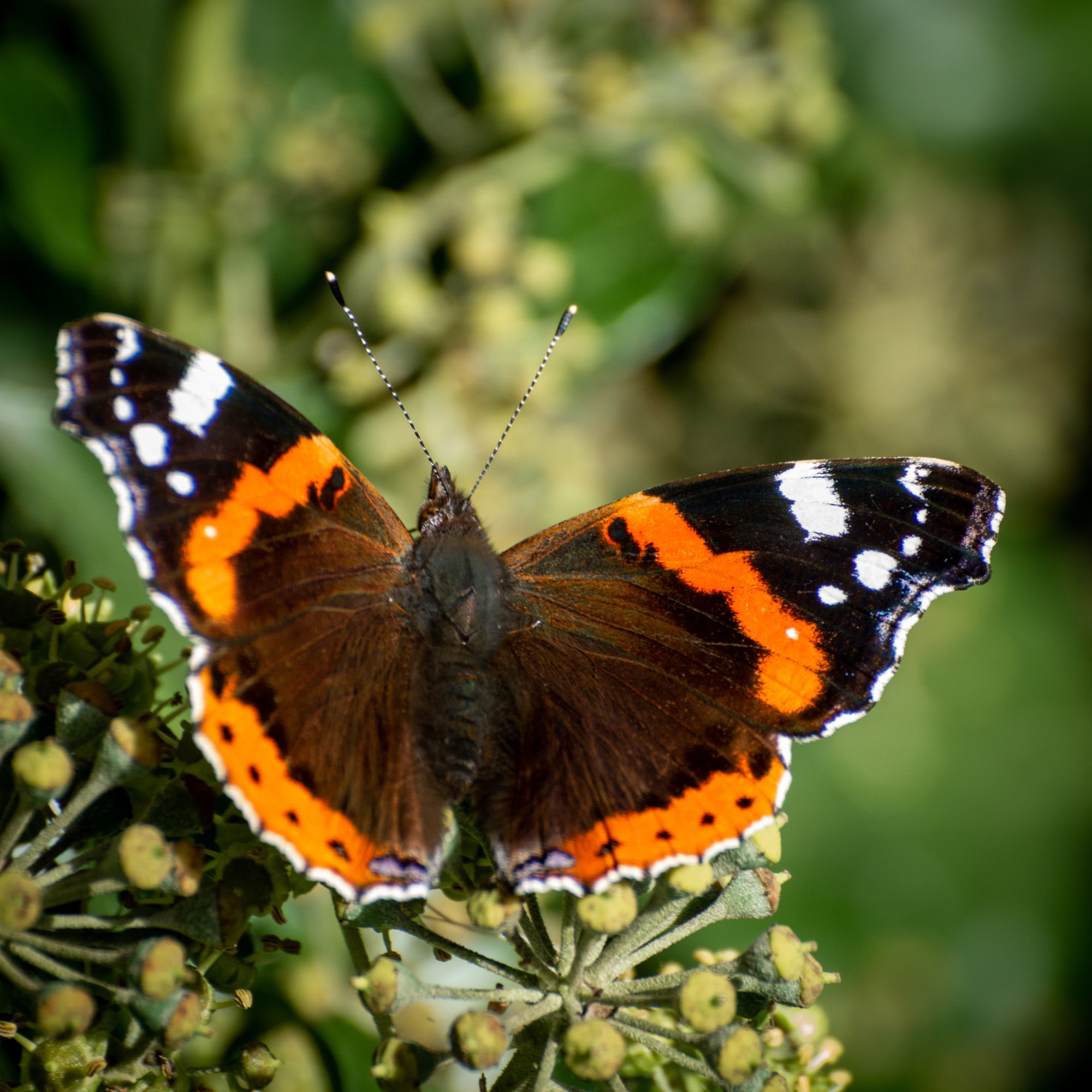Gardening for Butterflies
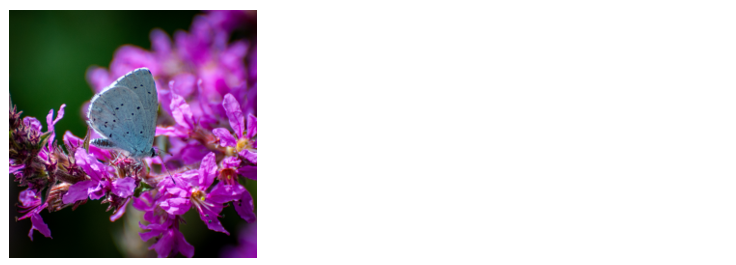
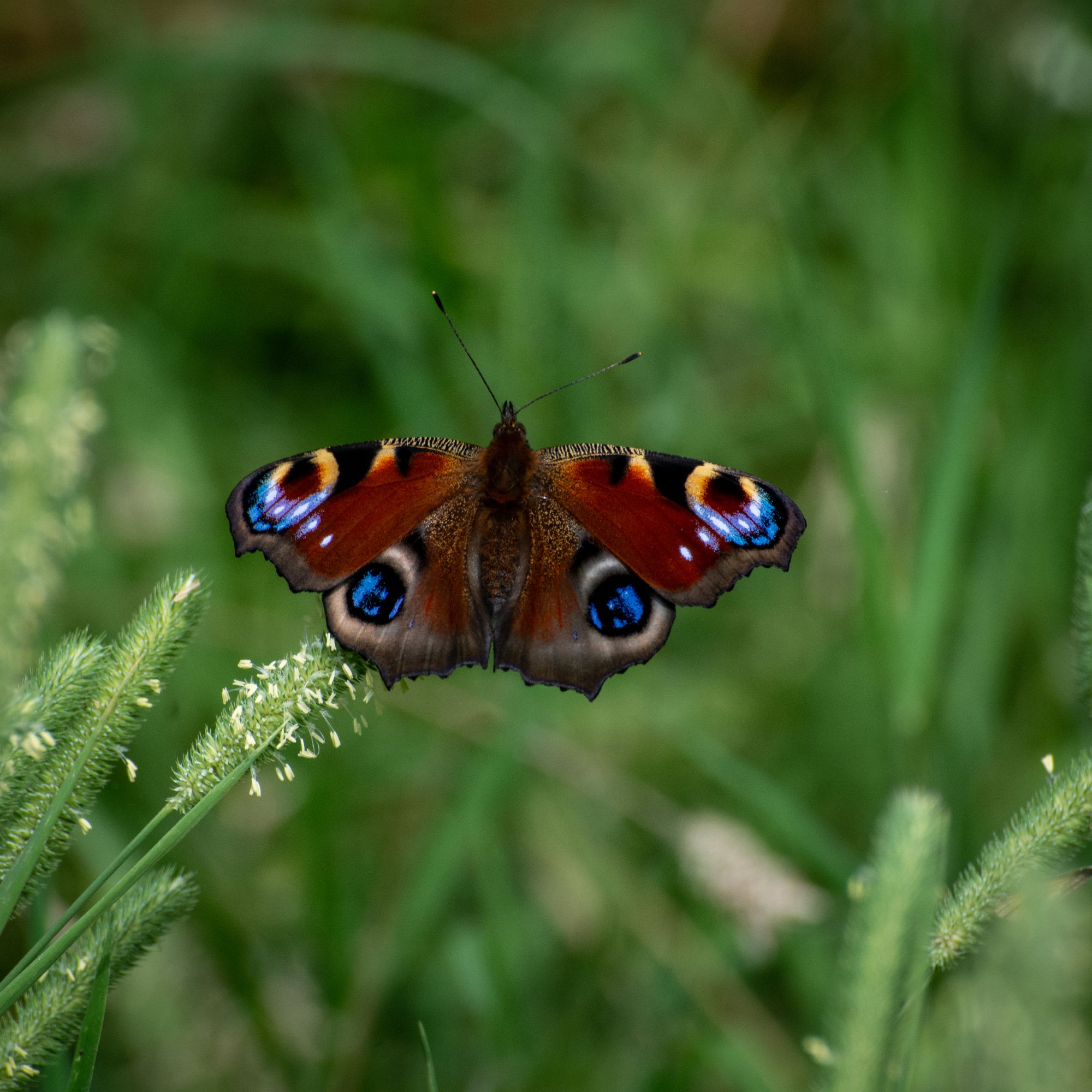
A lot is quite rightly made of our fantastic butterfly sites here in Northamptonshire, and many people come from all over the country to visit our localised butterflies in places such as Salcey Forest, Glapthorn Cow Pastures, and Fermyn Woods. There is, however, a very important habitat for our more common butterfly species, and that is of course our gardens. Encouraging butterflies into the garden is a mutually beneficial exercise as not only do the butterflies benefit from the extra resources provided, we also get to enjoy them from the comfort of our homes while sitting in the garden on a warm summer's day. One of the major factors in recent butterfly declines has been habitat loss so by providing a few plants for them we can really help.
There are two types of plants in a butterfly’s life - larval food plants on which the butterflies lay their eggs and their caterpillars feed, and nectar food plants which are the flowers on which the adult butterflies feed. The benefits of providing larval food plants are huge as without these there will be no butterflies at all, and it is also often possible to observe the whole life cycle of the butterfly. Believe it or not one of the most important larval plants for some of our butterflies is the common Stinging Nettle. The caterpillars of Red Admirals, Peacocks, Commas, and Small Tortoiseshells, which are some of our brightest and most welcome garden visitors, all feed on the Stinging Nettle so it is well worth keeping a patch if possible. Planting a Buckthorn in the garden will attract Brimstone butterflies and the eggs are very easy to find once a female has visited. They lay their eggs on the underside of a leaf and once hatched the caterpillars crawl onto the top of the leaves. They can be remarkably well camouflaged even when they get quite big! Like a lot of butterflies, the caterpillar once fully grown will wander off to pupate but occasionally a chrysalis can be found on the leaves too.
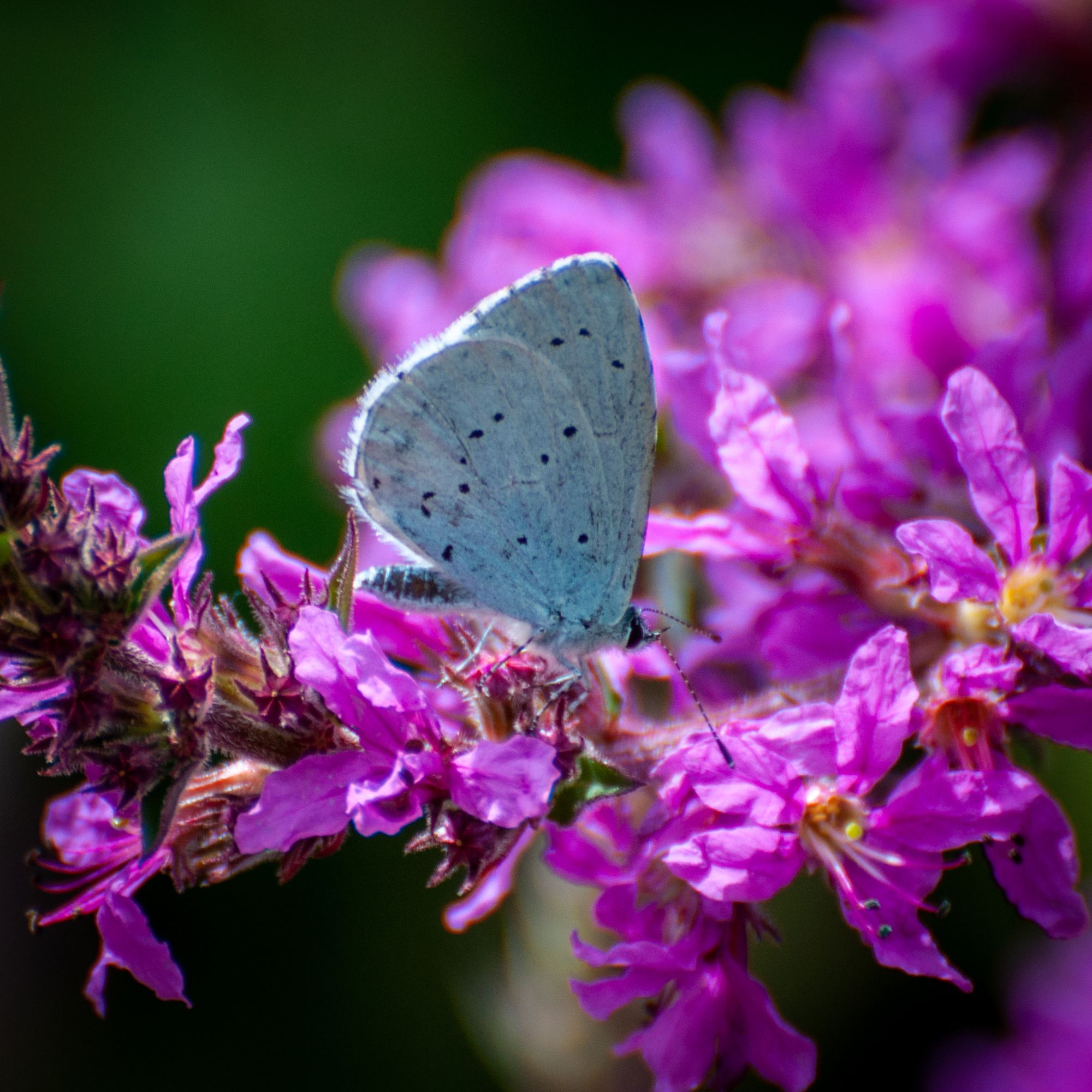
Holly Blues can be a very welcome sight in the garden and are commonly seen flying up and down the hedgerows. Holly Blues have a large variety of plants on which they can lay their eggs, but their favourites are Holly, Dogwood, and Ivy. Orange-tip butterflies can also be attracted into the garden with Lady Smock and especially Garlic Mustard. Their bright orange eggs can be found quite easily on the stems under the flowers and once emerged the caterpillars can be easy to find too. They overwinter in the pupal stage so it’s also worth checking any dead Garlic Mustard stalks during the winter to try and find their amazing-looking chrysalis. Nasturtiums will also attract the more common White butterflies with Large Whites, Small Whites, and Green-veined Whites (often referred to as the ”Cabbage Whites” due to their liking for Brassicas), and quite a few people I know plant Nasturtiums around the garden just for these butterflies.
You may of course be wondering how the butterflies find these plants to lay their eggs on and the answer is by using smell. The female butterfly will use scent receptors on its feet to find the correct plant and will then carefully lay an egg in the best place to provide the caterpillar with the best chance of finding suitable food. However, it isn’t an easy life being a butterfly, and lots of parasitic Wasps can lay their eggs in the caterpillars. One of the defence strategies of host plants is to change their scent when they are being eaten by caterpillars and this, technically known as herbivore-induced plant volatiles, sends a signal out to the parasitic Wasps to come and parasitize the butterfly larvae. It’s fascinating stuff!
Moving on to the nectar plants there is a rich variety of flowers we can plant to encourage adult butterflies to feed in our gardens. The famous one of course is the Buddleia (also known as the “Butterfly Bush”) and when in flower these can attract large numbers of butterflies into the garden. It is also worth checking your Buddleia at night too with a torch as you’ll be amazed how many moths will come and visit it too! According to Butterfly Conservation, the top ten best garden nectar plants are Buddleia, Ice Plant, Lavender, Michaelmas Daisy, Marjoram, Aubretia, Red Valerian, French Marigold, Hebe, and Candytuft, but many other plants can provide nectar sources throughout the season.
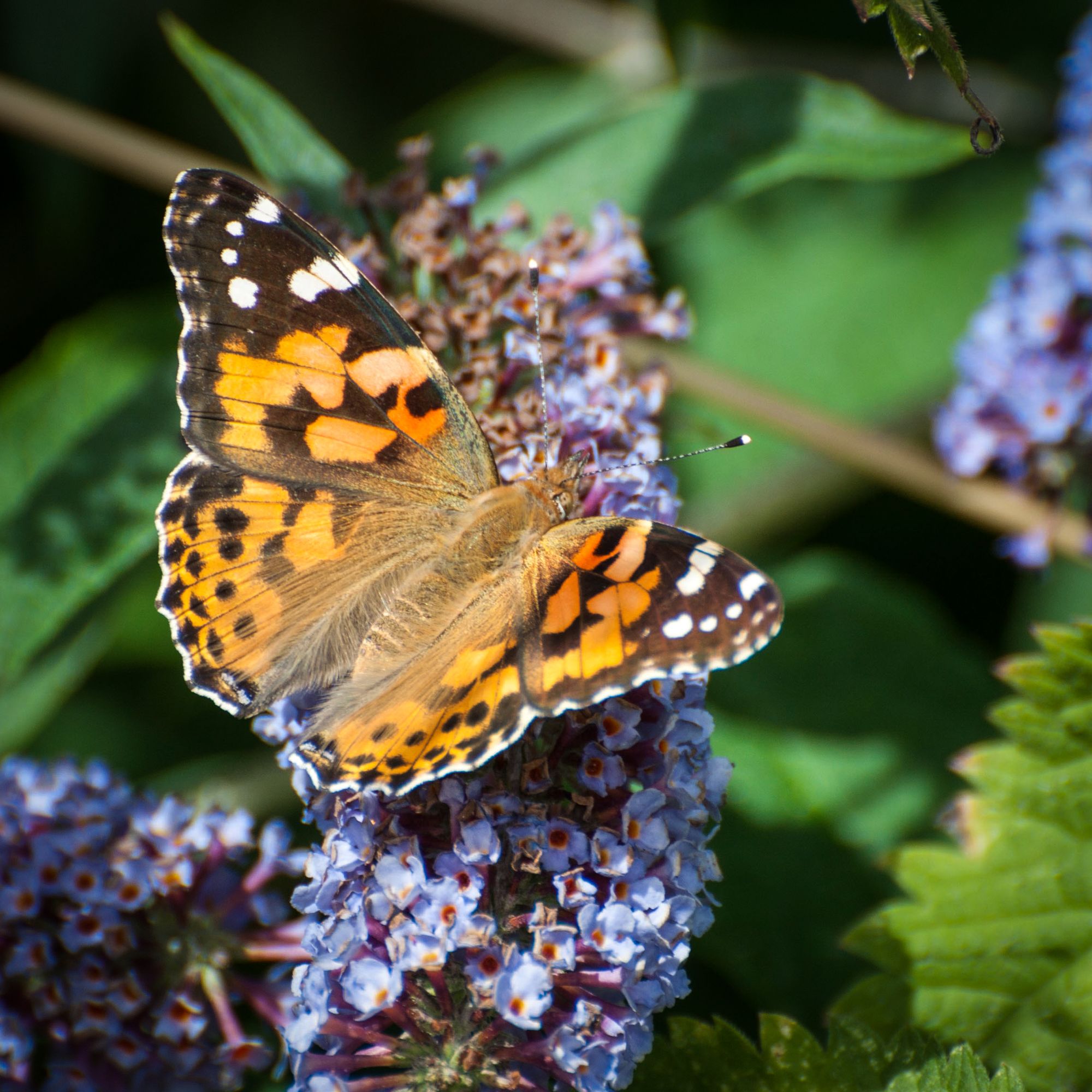
Good Spring flowering plants include Apple, Aubretia, Bluebell, Bugle, Cherry, Forget-Me-Knot, Honesty, Pear, Plum, Primrose, Rosemary, and Sweet William. Great plants for the summer months include Allium, Birds-Foot Trefoil, Bell Flower, Candytuft, Cat Mint, Clover, Cornflower, Everlasting Pea, French Marigold, Hemp Agrimony, Red Campion, Sage, Scabious, Teasle, Thyme, Verbena and Viper’s Bugloss to name just a few.
Another fascinating insect to look out for in the garden is the Hummingbird Hawk-moth. This day-flying migrant moth constantly seeks out flowers to fuel its high energy flight (just like a Hummingbird) as it whizzes from flower to flower before shooting out of the garden as quickly as it shot in! One of the most important nectar sources in the autumn is Ivy and the flowers can attract large quantities of Butterflies and Bees.
That’s it from me for now. 2021 wasn’t a very good season at all for our butterflies so let’s hope that this year is much better and by providing some extra habitats in our gardens we can hopefully give our local butterflies a much-needed boost.
You can find out much more information about gardening for butterflies on the Butterfly Conservation website at www.butterfly-conservation.org and you can read my full 2021 annual review of the butterfly season for Northamptonshire here - David James Wildlife Diary.
Instagram - @dave.b.james
Photo credit: Richard Hollingum
